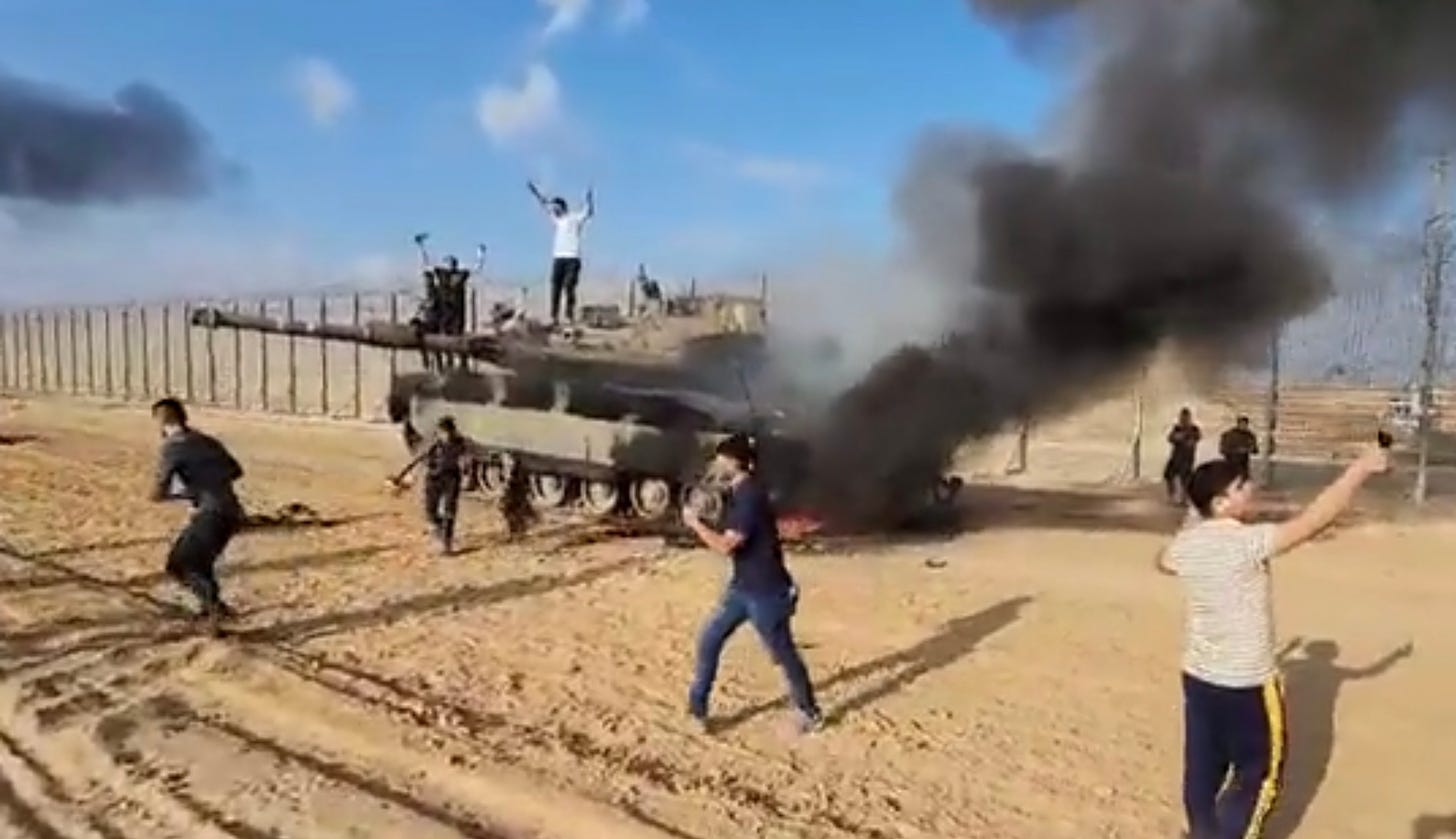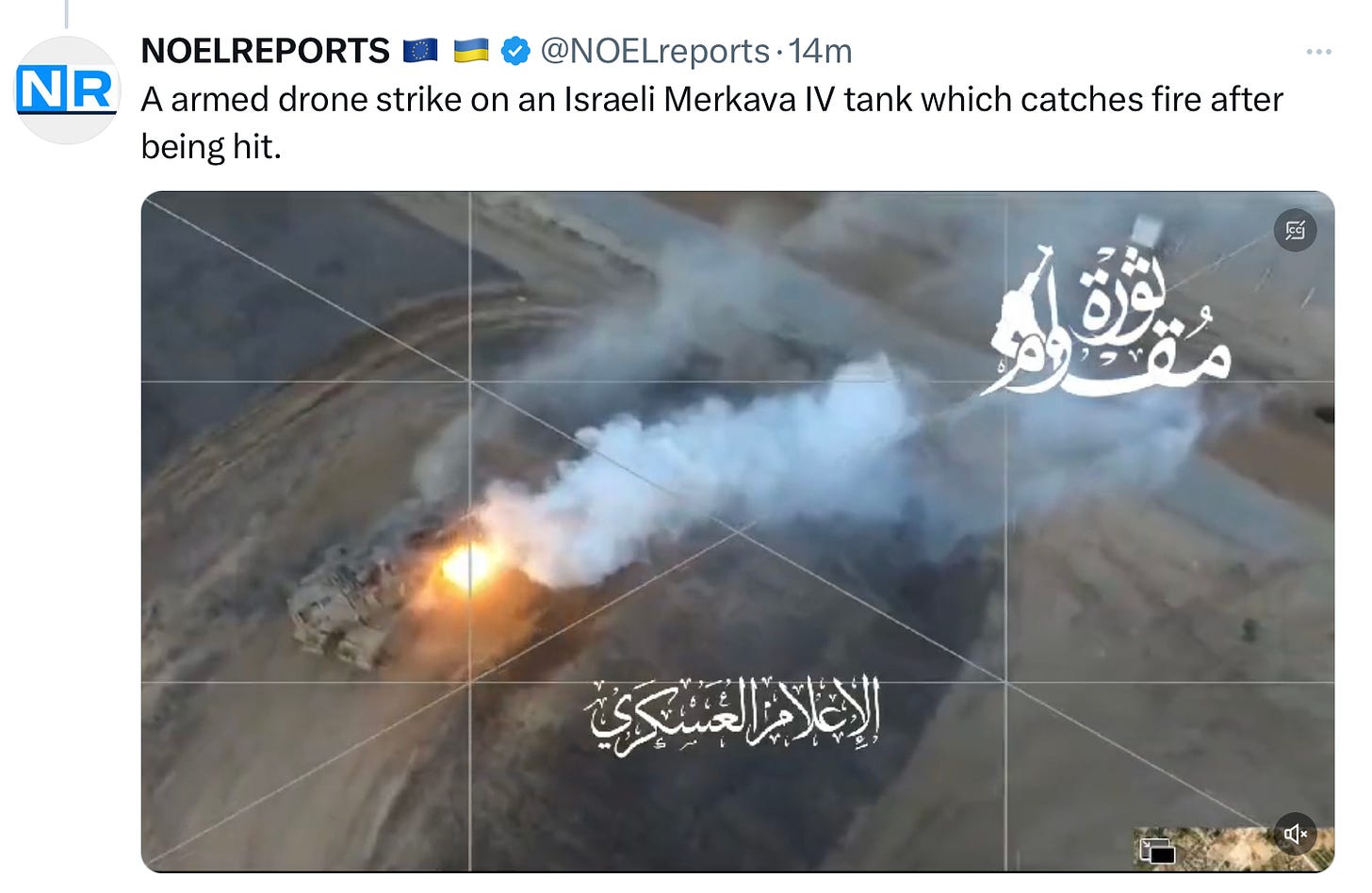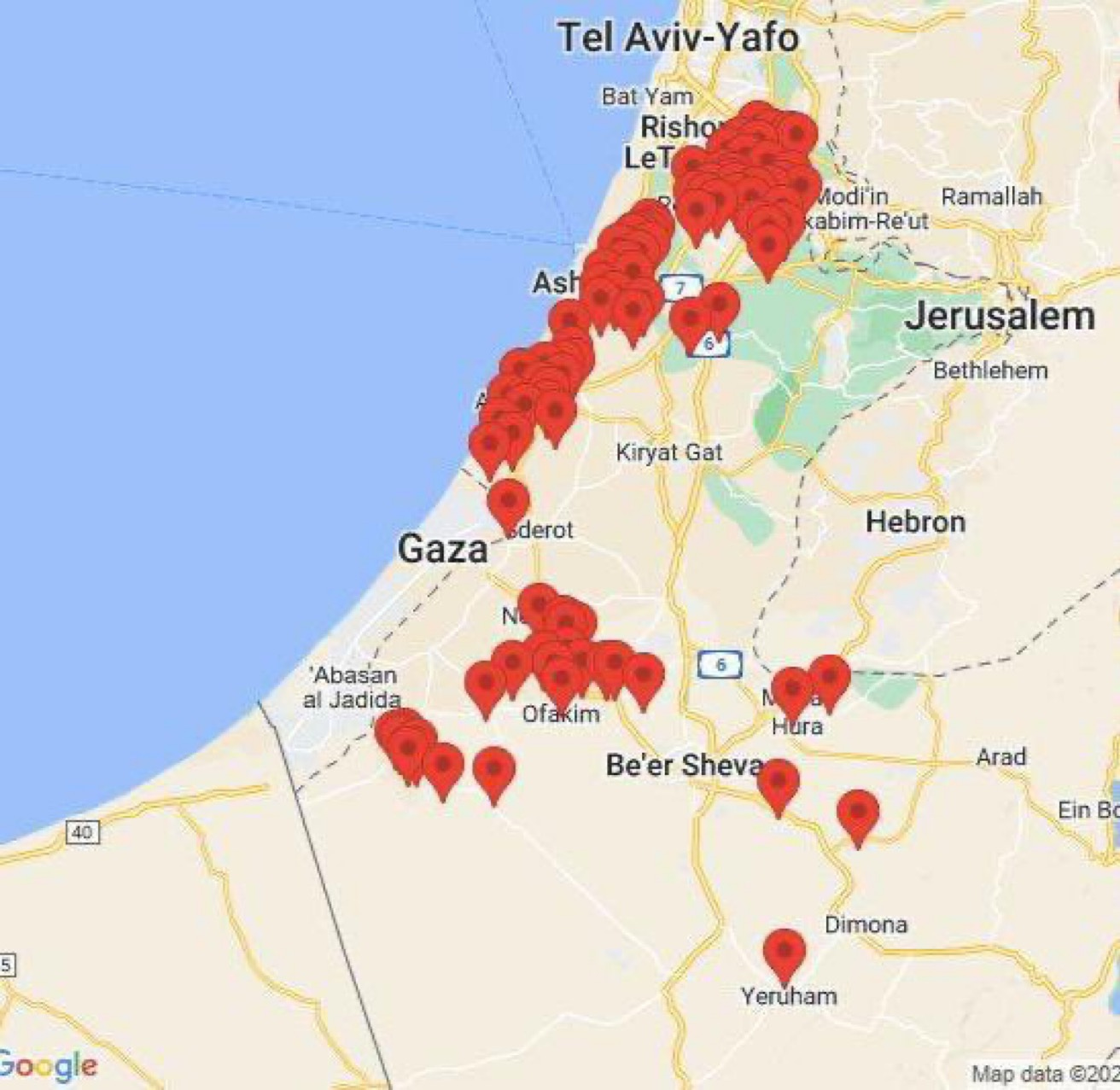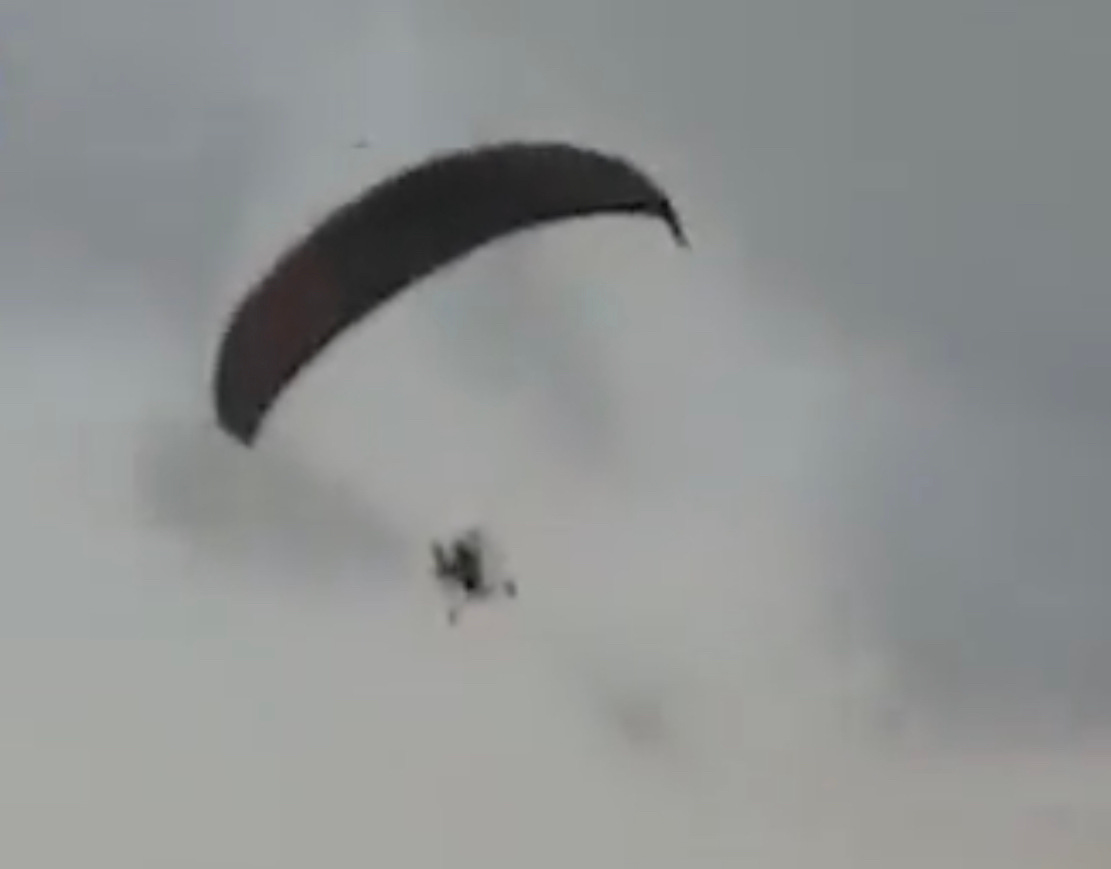This morning, I had intended to sit down and write a piece here on some of the transformative technology-conceptual systems that have been honed by Ukraine and Russia over the past 18 months. I will still do that in due course. However given the evolving surprise assault on Israel, I thought it worthy of some initial thoughts at this early stage.
Interestingly, the surprise Hamas attacks agianst southern Israel have occurred on the 50th anniversary of the 1973 Yom Kippur War. This too was a surprise attack on Israel, conducted by Israel’s Arab neighbours, on October 6, 1973. (It should be noted however that this year, Yom Kippur started at sundown on 24 September and ended on 25 September).
Clearly, this has been a well planned and coordinated attack by Hamas. They have claimed responsibility for the assault. The Al Qassam Brigades, the military wing of Hamas, have announced they’re an operation which is called Al Aqsa Floods.
Hamas is described by a Council for Foreign Relations brief as follows:
Hamas is a militant movement and one of the Palestinian territories’ two major political parties. It governs more than two million Palestinians in the Gaza Strip, but the group is best known for its armed resistance to Israel. Dozens of countries have designated Hamas a terrorist organization, though some apply this label only to its military wing.
Uncertainty and ambiguity reigns. It is unlikely that clarity around the situation will be established for some hours or even days. This will depend on how long Hamas can sustain its ongoing assault, and the speed and size of the Israeli assault.
What Do We Know?
So far, it is clear that Hamas has launched one of its largest single day attacks against Israel in what appears to be a ‘bolt from the blue’. In the wake of this attack, there is certain to be an array of Israeli inquiries about indicators and warnings of this impending attack. But clearly, they have achieved a large degree of surprise. This will be have been through a combination of good operational security and probably deception operations that will become clear in the coming days and weeks. The degree of simultaneity is also part of the surprise achieved so far.
This is a multi-domain assault. It isn’t only sophisticated military institutions that can conceptually think through the planning, integration, and execution of operations across multiple domains.
By achieving surprise, it generated shock among both the military and civil society. Hamas appears to have used a significant air attack, utilising rockets and even paraglider troops, to generate this shock in several areas of Israel.
This shock, which slows down or paralyses decision making, was exploited by Hamas to rapidly move as many troops as possible into Israel. That shock is wearing off and the Israeli military response has already commenced from the air, on the ground and and with air assault operations.
The attacks, originating from Gaza, has seen a large number of rockets hit several cities and towns in southern Israel. One media agency, CNN, has claimed that around 5000 rockets were fired into Israel. The Times of Israel has claimed the number is closer to 2000 rockets.
In at least one instance, Hamas has used an armed drone to drop a munition on an Israeli armoured vehicle. Other videos on social media show drones being used for reconnaissance and to drop munitions on an Israeli observation tower. However, when these videos were taken is unconfirmed.
Hamas have also employed heavy bulldozers to create breaches through border fences. Those who have followed the Israeli military for some time will know that the use of heavily armoured bulldozers is also a technique often used by the Israeli ground forces during Gaza operations.
These air attacks have been supplemented with maritime attacks. At least one social media feed has shown an Israeli Navy vessel engaging a civilian boat. Whether this is a Hamas vessel or otherwise is unclear. Regardless, the maritime element is a smaller part of the overall assault.
The Hamas main effort appears to be its ground assault into southern Israel. Hamas terrorists on foot, motorbikes and pickup trucks have flowed into southern Israel. There is vision of what is claimed to be a captured Israeli military facility (unconfirmed). At least one Israeli tank has been filmed burning and surrounding by cheering civilians
At the same time, these armed ground forces appear to have spread through multiple settlements in southern Israel, attacking civilians and military personnel. There are already hundreds of social media posts showing the very disturbing pictures of this which includes:
Dead civilians lying where they were shot at a bus station.
Hamas terrorists randomly shooting at civilian cars and buildings.
A systemic program to kidnap Israeli civilians and transport them to Gaza.
The display and desecration of the bodies of Israeli soldiers and civilians by Hamas terrorists in southern Israel.
Vision of damaged and destroyed buildings and burning civilian vehicles.
Clearly, these are all initial reports. They are deeply disturbing. It is likely worse is to come in the coming hours.
*** UPDATE: According to Israel’s rescue service, there are at least 22 Israelis who have been killed today and 250 other casualties.
*** UPDATE: According to CNN, Israeli aray and police forces are fighting Hamas terrorists in at least 21 locations in southern Israel.
As highlighted in the introduction, Hamas has claimed responsibility for the attacks. Attribution does not appear to be an issue here.
What Are the Hamas Aims?
There are likely to be multiple aims for this massive attack on Israel.
First and foremost, this is a political act. It is Hamas, again, using atrocities against Israel to shore up its political support in Gaza and with its foreign supporters. Indeed, it could be a response to its 2021 attacks against Israel which saw Hamas gain popularity. As this Council on Foreign Relations Report notes:
Observers say Hamas’s 2021 conflict with Israel increased the group’s political clout. Hamas won support as the champion of the broader Palestinian national movement for the first time in years by attacking Israel in response to tensions in Jerusalem rather than confining itself to issues in Gaza.
Second, Hamas will be keen to kill Israelis and degrade the reputation of the Israel Defence Forces. Hamas has longed opposed the state of Israel. While the founding document of Hamas called for the destruction of Israel, Hamas presented a new document in 2017 that accepted an interim Palestinian state but still refused to recognise Israel.
The operations by the Hamas military wing will be part of their long standing and continuous opposition to Israel. This death and destruction also provides an outlet for the frustration that Hamas believes is felt by the population of Gaza at Israel.
Third, Hamas will be seeking to generate a massive military response from Israel against Gaza. This is very likely. The Israel Security Cabinet will meet in the coming hours, and this is likely to direct a robust air and land attack against known Hamas targets throughout Gaza.
Hamas knows that every time Israel does this, it is likely to see its support increase among the population of Gaza, as well as foreign anti-Israel communities and organizations. Further, Hamas is certain to appreciate the increase in anti-Semitic sentiment world wide. Hamas will be hoping these attacks foster the continued rise in comment and action by anti-semites.
Finally, Hamas will be using this as part of its ongoing regional and global strategic influence campaign against Israel - and to sabotage any efforts by regional nations that might wish to soften their stance on Israel.
Alongside the militants who appear to be enthusiastically murdering Israeli civilians, there are certain to be teams capturing imagery and videos for use in their extensive strategic communication enterprise. The material these strategic communications teams are collecting will appear in Hamas recruiting material, and requests for funding from sponsors, for some time to come.
What Next?
Israel has announced Operation Swords of Iron, where tens of thousands of Israelis reservists will be called out for duty. The operation is anticipated to incorporate major operations against Hamas in southern Israel and throughout the Gaza Strip.
The first task for the Israel Defence Forces will be to clear Israel of all of those elements of Hamas’ militant Izz ad-Dine al-Qassam brigades. The priority will be to stop the murder of Israeli civilians and re-establish border security. Concurrently there will be air and missile strikes against Hamas targets. Ground assaults into Gaza are almost certain.
The Prime Minister of Israel has described three key objectives of the just-launched Operation Swords of Iron:
Our first objective is to clear out the hostile forces that infiltrated our territory and restore the security and quiet to the communities that have been attacked.
The second objective, at the same time, is to exact an immense price from the enemy, within the Gaza Strip as well.
The third objective is to reinforce other fronts so that nobody should mistakenly join this war.
The Israelis will also be looking for indicators for subsequent phases of this attack. Are there more rocket attacks or terrorist attacks on the way? Might Hamas, and affiliates, be planning attacks against other Israeli around the world?
Might Hezbollah use this as an opportunity to attack in the north? According to a statement from the group, they support the attacks and are in direct contact with Hamas. These will be important questions for Israel’s leadership in the coming hours.
The Israelis, at some point, are sure to investigate how this all occurred and why they were surprised. While that may not be a short term task, it will be a vital one.
There will be many lessons to learn by the Israeli military - and national security community - from this, but that can wait for another day.
Finally, this Hamas attacks may be the start of another extended period of conflict between Israel and Hamas. The last significant conflict, in 2021, led to hundreds of deaths and extensive damage. Other significant periods of conflict occurred in 2014 and 2018. We might expect what follows today to be at least as bad as these periods of warfare between Israel and Hamas.
For now, there is a surplus of uncertainty. We will learn more in the coming hours and days about the attacks, the (probably) large toll taken by the people of Israel. But it has been a chaotic and terrible day for the people of Israel.








The situation in Gaza cannot be allowed to go on. Israel must break the cycle of violence by eliminating Hamas as a military force.
I see extremely dark days for the people of Gaza. Israel might end up being a permanent occupying force in the Strip.
Here I was, thinking 2023 is starting to ramp down without further surprises (on top of the already going things)…